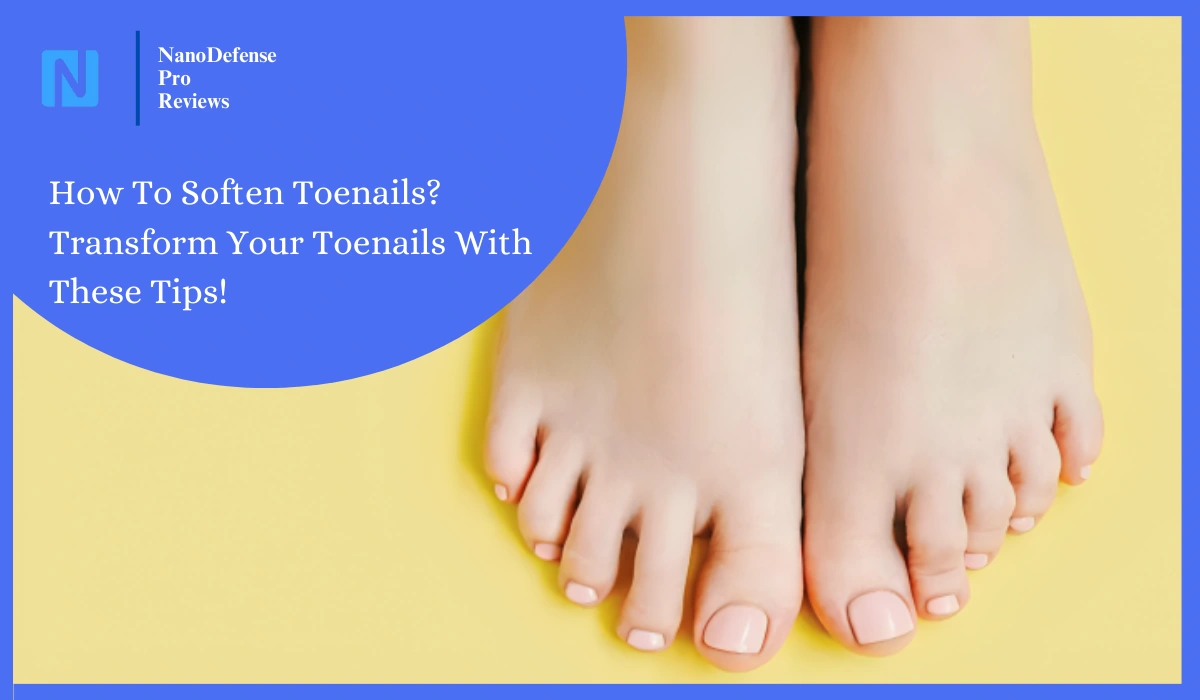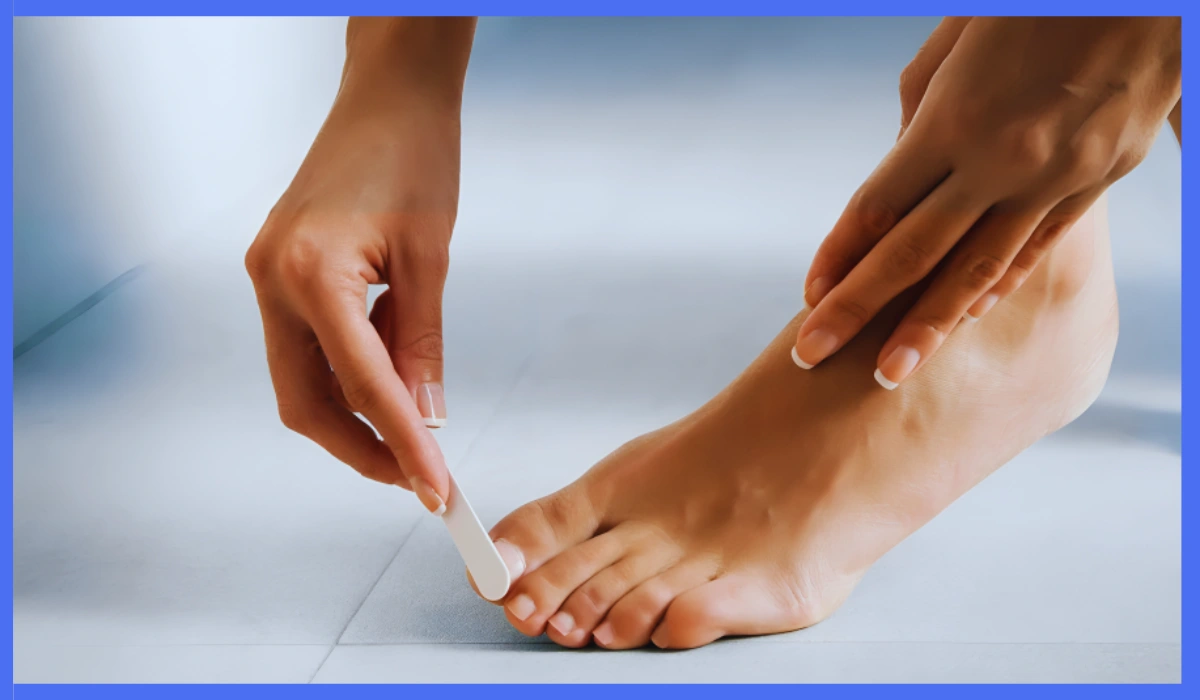How To Soften Toenails? Transform Your Toenails With These Tips!
Foot care is an essential aspect of overall well-being that is often overlooked. Hard, thick toenails can cause significant discomfort, making even simple tasks like walking a painful ordeal. Common causes of hard toenails include aging, improper footwear, and medical conditions like fungal infections. Softening toenails is crucial for maintaining foot health, alleviating discomfort, and…

Disclaimer: This article has been generated with the assistance of AI tools. While our research team has fact-checked the content, readers should independently verify information for accuracy and reliability.
Foot care is an essential aspect of overall well-being that is often overlooked. Hard, thick toenails can cause significant discomfort, making even simple tasks like walking a painful ordeal. Common causes of hard toenails include aging, improper footwear, and medical conditions like fungal infections. Softening toenails is crucial for maintaining foot health, alleviating discomfort, and preventing further complications. This guide will explore the importance of soft toenails and provide practical solutions for achieving happy, healthy feet.
Understanding Hard Toenails

Toenails are composed of layers of keratin, a protein that provides strength and protection. However, when nails become dehydrated or lack moisture, they can thicken and harden over time. Factors such as repetitive trauma, lack of proper nail care, and certain medical conditions can contribute to this hardening process. For instance, fungal infections like onychomycosis and skin conditions like psoriasis can cause nails to become thickened, discolored, and brittle. Neglecting nail care can exacerbate these issues, leading to further discomfort and potential complications.
Methods For Softening Toenails
- Soaking: One of the most effective ways to soften toenails is by soaking feet in warm water. Add Epsom salts or a mild soap to the water to enhance the softening effect. Soak your feet for 15-20 minutes, allowing the nails to absorb moisture and become more pliable. This simple practice can be done regularly to maintain soft, healthy nails.
- Moisturizing: After soaking, it’s essential to lock in the moisture by applying a moisturizer specifically formulated for nails and feet. Look for products containing urea, lactic acid, or petrolatum, as these ingredients help soften and hydrate nails. Consistent application of moisturizers is key to maintaining soft, supple nails.
- Trimming: Proper nail trimming is crucial to prevent further thickening and hardening. Use clean, sharp nail clippers and cut straight across, avoiding cutting into the corners to prevent ingrown nails. Regular trimming helps maintain a healthy nail shape and prevents excessive thickening.
- Nail Softeners: Over-the-counter nail softening products containing ingredients like urea or alpha hydroxy acids can be effective in softening hard toenails. These products work by breaking down the keratin in the nails, making them more pliable and easier to trim. Follow the instructions carefully and use these products as directed for safe and effective results.
- Professional Help: In severe cases or when underlying medical conditions contribute to nail hardness, it’s advisable to seek professional help from a podiatrist. Podiatrists have specialized tools and techniques to safely and effectively soften and treat thickened toenails, providing relief and addressing any underlying issues.
Preventive Measures
- Wear Proper Footwear: Choosing shoes with adequate room for toes and proper support can help reduce pressure on nails, preventing thickening and hardening. Avoid tight, ill-fitting shoes that can cause friction and trauma to the nails.
- Hygiene Practices: Maintaining good foot hygiene is essential to prevent fungal infections and moisture-related issues that can contribute to nail hardness. Keep feet clean and dry, and wear breathable socks and shoes to prevent excessive moisture buildup.
- Nail Care Routine: Establish a regular nail care routine that includes trimming, moisturizing, and inspecting for any abnormalities. This proactive approach can help catch issues early and prevent further complications.
- Balanced Diet: A balanced diet rich in vitamins, minerals, and essential fatty acids can contribute to healthy nail growth and maintenance. Include foods like nuts, leafy greens, and fatty fish in your diet to support overall nail health.
Lifestyle Tips For Healthy Feet
- Regular Exercise: Engaging in regular physical activity can improve circulation and promote overall well-being, which in turn benefits foot health. Activities like walking, swimming, or cycling can be excellent choices.
- Foot Exercises: Simple exercises like toe stretches and ankle rotations can help improve flexibility and strength in the feet, reducing the risk of injuries and promoting healthy nail growth.
- Rest and Elevation: After a long day on your feet, it’s essential to give them adequate rest and elevation. This can reduce swelling, discomfort, and pressure on the nails, allowing for better circulation and recovery.
- Regular Check-ups: Schedule regular foot check-ups with a healthcare professional, such as a podiatrist or dermatologist. They can monitor any changes or issues with your nails and feet, providing early intervention and treatment if necessary.
Conclusion
Softening toenails is an essential aspect of foot care that can significantly improve comfort, prevent complications, and promote overall foot health. By incorporating the suggested methods, preventive measures, and lifestyle tips into your routine, you can achieve happy, healthy feet and bid farewell to the discomfort caused by hard, thick toenails. Remember, consistent effort and attention to foot care can go a long way in maintaining soft, supple nails and enjoying a better quality of life.
FAQs
Yes, in many cases, thick toenails can return to a normal, healthy state with proper care and treatment. Consistent moisturizing, trimming, and addressing underlying conditions can help reduce thickness and restore the nails to their original state.
Podiatrists have access to specialized tools and techniques to safely and effectively soften toenails. They may use urea-based creams, alpha hydroxy acids, or even mechanical debridement methods like filing or buffing to remove thickened layers of nails.
Vaseline, or petroleum jelly, can help soften toenails to some extent. It creates a protective barrier that locks in moisture, preventing further dehydration and hardening. However, for severe cases or underlying conditions, more specialized treatments may be necessary.
Yes, it is possible to have thick toenails without a fungal infection. Other factors such as aging, trauma, poor circulation, certain medications, and skin conditions like psoriasis can contribute to nail thickening and hardening.

Lisa Miller
Dr. Lisa Miller is a board-certified Dermatologist with over 15 years of experience treating a wide range of skin, hair, and nail conditions. She received her medical degree from the prestigious Columbia University College of Physicians and Surgeons and completed her dermatology residency at the University of California, San Francisco, one of the top dermatology training programs in the country. Dr. Miller is an active member of the American Academy of Dermatology and has authored numerous peer-reviewed articles and book chapters on the latest advancements in dermatological care. She is frequently invited to speak at national and international medical conferences, sharing her expertise with other clinicians. In her private practice, Dr. Miller takes a patient-centered approach, collaborating closely with each individual to develop customized treatment plans. She is passionate about empowering her patients to achieve optimal skin, hair, and nail health through a combination of the latest medical therapies and lifestyle recommendations.
